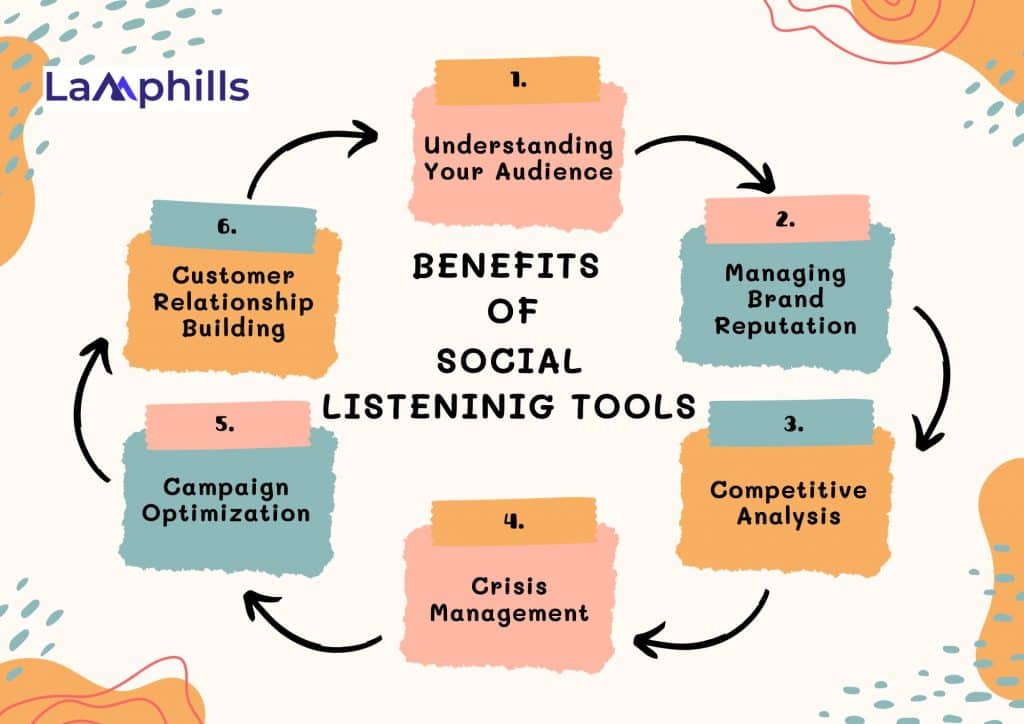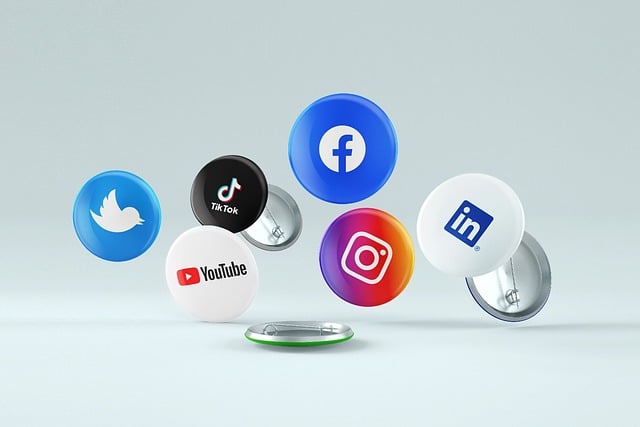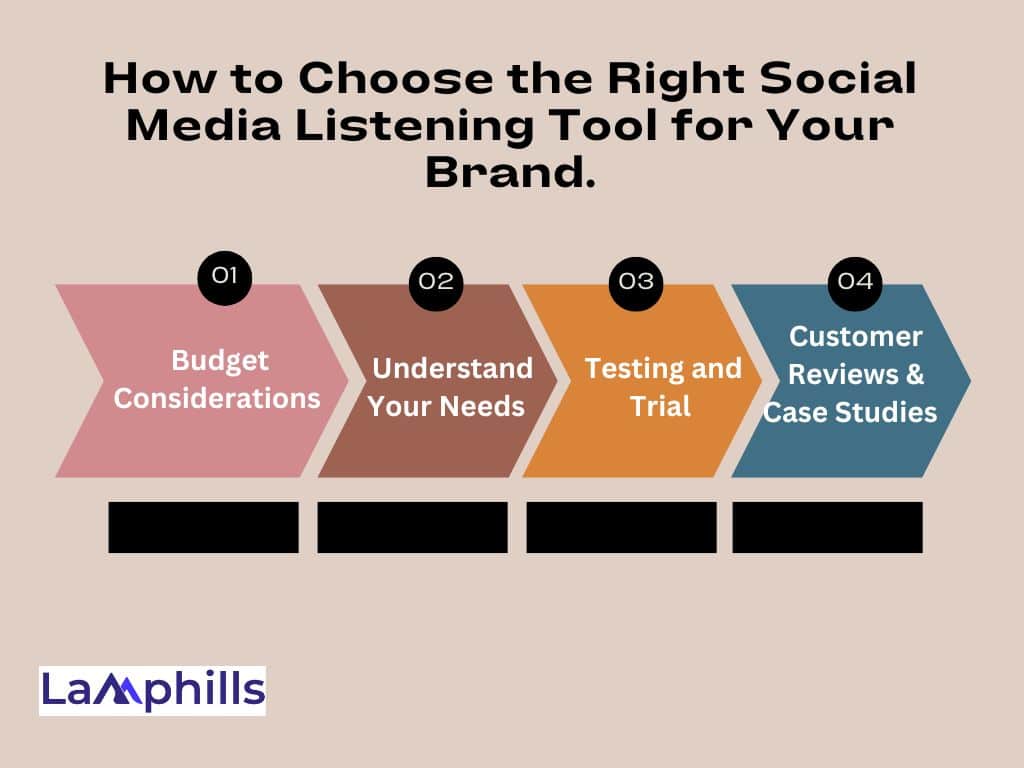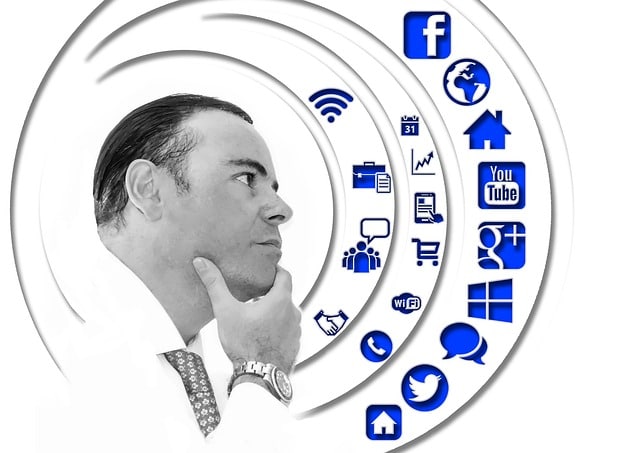Do you want to know what people are saying about your brand on social media without spending a fortune? Good news! There are free social listening tools that can help you track conversations, see what your customers love, and catch any issues early.
Right now, conversations are happening about your brand in tweets, Instagram comments, and Facebook groups. This isn’t just random talk—it’s valuable feedback waiting to be uncovered.
Imagine being able to listen in on these conversations. That’s where social listening tools come in. They help turn all the online chatter into useful information, showing you what your customers love, what frustrates them, and what they’d like to see from you.
In this article, we’ll share the best free social listening tools to help you stay on top of your brand’s online presence without spending a dime. Although choosing the right social listening tool can feel overwhelming, don’t worry—we’ve done the hard work for you.
This blog goes beyond listing the top 8 tools. It explores each one, covering pricing, features, reviews, and drawbacks.
Ready to find out what your audience is saying? Let’s explore the best social listening tools that will keep you ahead of the game.
Key Points
- Social listening tools help brands track real-time online conversations, making it easier to respond quickly and manage their online reputation effectively.
- These tools analyze both positive and negative mentions to provide insights into how customers feel about your brand, helping you adjust your marketing strategies.
- Social listening isn’t just about your brand; it also lets you analyze what people are saying about your competitors, giving you a competitive edge.
- You don’t need to spend a lot of money; free tools like Google Alerts, Hootsuite, and TweetDeck can help track mentions and analyze trends across platforms.
- Social listening tools allow brands to fine-tune marketing campaigns by understanding audience reactions, ensuring your content resonates and performs better.
What is a social listening tool?
I used to wonder what people were saying about my clients’ brands online. Were their customers happy, upset, or just giving feedback that could help make their products better? I knew these conversations were happening, but I didn’t know how to access them.
This curiosity led me to start using social listening tools, and once I did, everything became clear. I could see how people talked about my clients’ brands on social media, blogs, and forums, giving me the information I needed to improve their marketing strategies.
You see, social listening isn’t just about reacting to feedback; it’s about using the right tool to understand conversations, respond quickly, and even predict the success of your campaigns.
Simply put- A social listening tool is an app or software that helps keep track of what people are saying about your brand, your competitors, and important topics in your industry on social media. It looks for both tagged and untagged mentions of your brand. By doing this, it helps you with:
- Understanding how people feel about your brand (sentiment analysis)
- Gaining useful information about your brand
- Managing your online reputation and reviews
- Finding out what people think about trending topics
- Analyzing your competitors
Smart businesses and marketers use these insights to improve their products, social media strategies, and customer service. But remember, your insights are only as good as the tools you use. Poor tools give poor insights, which can mess up your entire strategy.
Many people mistake social monitoring tools for social listening tools, but these tools are not the same. Let’s learn their differences.
What’s the Difference Between Social Listening and Social Monitoring?
Social listening and monitoring are both used in digital marketing but have different goals and methods.
Here are the main differences:
#1. Focus: Specific Mentions vs. Big Picture
Social monitoring examines specific mentions and individual interactions. Social listening, on the other hand, looks at the bigger picture by analyzing trends and how people feel about a brand or industry.
#2. Reaction: Immediate vs. Future Planning
Social monitoring is reactive, meaning it responds to comments or mentions as they happen. Social listening is proactive, helping to understand why customers feel a certain way, which can shape future strategies.
#3. Tools: Manual vs. Automated
Monitoring is often done manually, though tools can help track mentions. Social listening usually involves automated tools that collect and analyze large amounts of data, offering deeper insights.
#4. Goals: Quick Response vs. Long-Term Strategy
The goal of social monitoring is quick interaction, like answering questions or thanking customers. Social listening aims to gather insights that can lead to big changes in marketing, products, or the overall brand approach.
In summary, social monitoring helps you stay responsive to your audience at the moment, while social listening provides valuable information for long-term success. Using both together can improve your social media strategy.
Why Social Media Listening Tools Are Essential for Brands

Before I started using social listening tools, I used to depend on direct feedback from customers or wait for problems to come up. But once I began paying attention to what people were saying online, I got real-time information to act on.
This has helped me manage my clients’ reputations better, engage with their audience more effectively, and deal with potential issues early. Social listening gave me an advantage by helping me find opportunities to engage, improve customer satisfaction, and even enhance products.
It’s not just about tracking mentions, it’s about understanding how people see your brand.
#1. Understanding Your Audience
Knowing what your audience wants is crucial to staying competitive, and social listening tools help with this. They collect important information about customer likes, dislikes, and feelings. With this data, brands can adjust their products and services to better fit customer needs. This helps businesses stay relevant in a fast-changing market and stay ahead of their competitors.
#2. Managing Brand Reputation
Social listening tools let brands keep track of online conversations, spotting negative comments and changes in customer opinion early. By addressing issues before they grow, companies can protect their image and keep their customers’ trust.
#3. Competitive Analysis
Social listening isn’t just for your brand; it also helps you watch what people are saying about your competitors. These tools let you see their strengths and weaknesses, helping you understand how customers feel about them. This information can guide your own business decisions and help you stand out in the market.
#4. Crisis Management
During a crisis, acting quickly is crucial. Social listening tools can help you spot problems early so you can respond fast and protect your brand’s reputation. After the crisis is over, these tools also give insights into how well the situation was handled, helping you improve your future crisis plans.
#5. Campaign Optimization
A marketing campaign is only successful if it connects with your audience. Social listening tools help you see how people are reacting to your campaigns. By understanding what they like, you can adjust your messages and content to make your campaigns more interesting and effective.
#6. Customer Relationship Building
Building strong connections with customers is important for lasting success. Social listening tools let you respond to feedback and join conversations with your audience. This shows that your brand cares about what they think, helping to build customer loyalty and satisfaction.
#7. Measuring ROI
Measuring the return on investment (ROI) from social media is important to know if your marketing is working. Social listening tools help by combining social media data with sales data. This shows how your social media efforts are affecting sales, allowing you to adjust your strategies to get the best results.
Top 8 Free Social Listening Tools You Should Consider in 2024.

Image by Biljana Jovanovic from Pixabay
Whether you manage your own brand or a client’s, using the right social listening tool can help you stay on top of conversations and act quickly when needed. Here are the top 8 free social listening tools you should consider in 2024, along with their features, reviews, drawbacks, and pricing.
#1. Google Alerts
Features: Google Alerts is a simple tool that tracks specific keywords across the web. You set up alerts for your brand or any keyword you want to monitor, and Google sends you an email notification when it finds new mentions. It’s a quick way to keep tabs on brand mentions or any topic you’re interested in.
Reviews: People love how easy it is to set up and use. It’s reliable for tracking basic mentions across blogs, news sites, and other web pages.
Drawbacks: It doesn’t cover social media platforms like Facebook or Twitter and lacks features like sentiment analysis or detailed reports.
Pricing: Completely free.
#2. Hootsuite
Features: While known for scheduling social media posts, Hootsuite’s free plan also includes basic social listening tools. You can track mentions of your brand across different social platforms and engage with your audience in real time. It’s a great all-in-one tool for managing your social media presence.
Reviews: Users appreciate its multi-account management and user-friendly interface. However, some feel that the free version is limited in what it can do for deeper analysis.
Drawbacks: The free plan only allows you to monitor up to three accounts, and its analytics features are very basic.
Pricing: Free plan available; paid plans start at $19/month.
#3. TweetDeck
Features: If your brand is active on Twitter, TweetDeck is a great free tool. It allows you to monitor multiple Twitter accounts, track mentions and hashtags, and engage with users—all in one dashboard. You can organize columns to keep an eye on specific keywords or competitor activities.
Reviews: TweetDeck is praised for its simplicity and focus on Twitter. Users find it a must-have for managing multiple Twitter accounts and keeping track of conversations in real time.
Drawbacks: It only works for Twitter, so if you need to monitor other platforms, you’ll need a separate tool.
Pricing: Free.
#4. Mention
Features: Mention is a social listening tool that tracks brand mentions across multiple platforms, including social media, blogs, and news websites. It also provides real-time notifications and basic sentiment analysis, helping you understand whether the conversation around your brand is positive or negative.
Reviews: Users like the user-friendly dashboard and the ability to track mentions across various platforms. It’s especially useful for small businesses or marketers managing multiple clients.
Drawbacks: The free plan only allows you to track one keyword, which can be limiting if you need to monitor multiple campaigns or competitors.
Pricing: Free plan available; paid plans start at $29/month.
#5. Brand24
Features: Brand24 offers real-time tracking and sentiment analysis, making it a robust option for monitoring brand mentions and understanding how people feel about your brand. It tracks mentions across social media, blogs, forums, and news outlets. You can also access detailed reports that help you better understand your audience’s perception.
Reviews: Brand24 is known for its comprehensive features, especially its sentiment analysis and ability to track negative mentions, which can be crucial for crisis management.
Drawbacks: The free trial only lasts 14 days, after which you’ll need to upgrade to a paid plan to continue using it.
Pricing: 14-day free trial; plans start at $49/month.
#6. Keyhole
Features: Keyhole offers real-time social media monitoring, hashtag tracking, and reports on engagement metrics. It’s especially good for tracking specific campaigns or events by keeping an eye on relevant hashtags and keywords.
Reviews: Users love the visual dashboard that shows trends and engagement in an easy-to-read format. It’s ideal for marketers who want clear insights into how their campaigns are performing.
Drawbacks: The free version has limited features and can only monitor a small number of keywords or hashtags.
Pricing: Free trial available; paid plans start at $49/month.
#7. Talkwalker Alerts
Features: Talkwalker Alerts is similar to Google Alerts but with more customization options. It tracks brand mentions, keywords, or competitor activities and sends you email notifications. The tool includes basic sentiment analysis, so you can gauge whether mentions are positive or negative.
Reviews: It’s considered an upgrade from Google Alerts due to its ability to filter results by sentiment and provide more comprehensive coverage.
Drawbacks: While it provides a lot for free, it lacks the advanced features and in-depth analysis of paid tools.
Pricing: Free.
#8. Awario
Features: Awario offers real-time social listening with the ability to track brand mentions, competitors, and keywords across social media and the web. It also includes sentiment analysis and detailed reporting, making it a powerful tool for those who need deeper insights into brand perception.
Reviews: Users appreciate its detailed reports, competitor analysis, and real-time updates. It’s especially useful for marketers managing multiple brands or clients.
Drawbacks: The free trial is short (7 days), and after that, you’ll need to move to a paid plan to keep using the tool.
Pricing: Free trial available; paid plans start at $29/month.
Each of these free social listening tools offers unique features and benefits depending on your needs. Whether you’re managing a single brand or working with multiple clients, these tools can help you keep an ear on what’s being said online and make informed decisions based on real-time data.
Start with the free versions to see which one works best for you, and upgrade as your needs grow.
In addition, to stay on top of what people are saying about your brand online, a good social listening strategy can help you track conversations, spot trends, and respond to feedback quickly. To make things easier, we’ve put together a simple Social Listening Strategy Checklist.
Follow these easy steps to start understanding your audience better and improving your brand’s online presence. Check out the checklist above.
Key Features to Look for in a Social Media Listening Tool
Choosing the right social media listening tool is important for keeping track of what people are saying about your brand online. To pick the best one, you need to know which features will be most useful.
Here’s a simple guide to the important features you should look for when checking out social listening tools.
#1. Coverage on Multiple Platforms
A good social listening tool should be able to track conversations on different social media platforms, including popular ones like Facebook, Twitter, Instagram, LinkedIn, and TikTok. By covering multiple platforms, you won’t miss any important discussions, helping you gather insights from wherever your audience is active.
#2. Monitoring in Real-Time
To stay ahead, it’s important to monitor conversations as they happen. Real-time tracking allows you to respond quickly to customer interactions, especially during key events like product launches or when addressing feedback. A tool with real-time monitoring keeps you connected with your audience during these crucial times.
#3. Keyword and Hashtag Tracking
To find the most important conversations, tracking keywords and hashtags is crucial. Use a tool that lets you follow specific words, brand mentions, and industry hashtags. This helps you avoid irrelevant chatter and focus on trends and talks that matter most for your business.
#4. Sentiment Analysis
Knowing the emotion behind online mentions can make a big difference. Sentiment analysis sorts mentions into positive, negative, or neutral, giving you a clear view of how people feel about your brand. This helps you catch potential problems early and highlight positive trends to build on.
#5. Finding Influencers
Finding important influencers in your industry can make a big difference in your marketing. Using tools that help you find influencers who fit your brand lets you form smart partnerships that can increase brand awareness and get more people interested in what you offer.
#6. Understanding Your Audience
Knowing your audience well is key to creating the right content and strategies. Tools that give detailed information about customer attitudes, behaviors, and preferences help you engage better. By understanding what matters to them, you can create content that connects with your audience and builds stronger relationships.
#7. Spotting Trends
To stay up-to-date in a fast-moving digital world, you need to be able to spot new trends. Tools that help you track changes in what people want and how they behave are important. This helps your brand adjust quickly and even take the lead in industry conversations.
#8. Competitive Intelligence
Watching what your competitors are doing is just as important as tracking your own brand. Social listening tools with competitor analysis features let you compare how much people are talking about your brand versus theirs. This information helps you improve your strategies and stay ahead of the competition.
#9. AI and Machine Learning
AI and machine learning make social listening easier by automatically analyzing data and giving deeper insights. These technologies can spot patterns, predict trends, and provide more accurate feedback on how people feel about your brand. AI tools can also give personalized suggestions and catch unusual activity, helping brands fix problems early and improve their social media strategies.
#10. Data Integration
To get a full view of your brand’s online presence, data integration is important. Pick a tool that works with other systems, like CRMs or marketing platforms. By connecting data from different sources, you get a clearer and more complete understanding of your social listening efforts.
#11. Easy-to-Use Interface
Lastly, it’s important that the tool is simple to use. An easy-to-use interface helps you quickly find and understand the data. Make sure the tool makes it easy to view insights and reports, so you can make fast decisions and change your strategies when necessary.
Having known the key features to look out for in a social listening tool, let’s learn how to choose the right tool for your brand.
How to Choose the Right Social Media Listening Tool for Your Brand.

it’s important to know what people are saying about your business. The right tool helps you track mentions, monitor feedback, and understand how your audience feels.
But with so many options out there, it can be hard to decide which one fits your needs. Here’s a quick step to choose a social media listening tool, that’s fitting for your brand.
#1. Understand Your Needs
Begin by figuring out what your brand needs. Think about the size of your social media presence, the platforms you use, and the kind of information you want to track. Decide if you need a tool that monitors many platforms or one that focuses on specific ones like Twitter or Instagram.
Also, consider the type of insights you’re looking for, such as customer feelings, tracking competitors, or gathering feedback. This will help you choose a tool that matches your goals.”
#2. Budget Considerations
It’s important to know the difference between cost and value. Social media listening tools can be budget-friendly for small businesses or more expensive for larger companies. Look at what features and benefits each tool offers for its price.
Think about how the tool’s advantages, like better customer engagement and handling crises, make it worth the money. Make sure the tool can grow with your brand’s needs.”
#3. Testing and Trial
Many social media listening tools offer free trials or demos. Take advantage of these to see how well the tool works before buying it. During the trial, check how easy it is to use, set up, and how accurate the information is.
See if the tool works smoothly with your current systems and if it meets your needs. Trying different tools can help you compare features and choose the one that fits your brand best.”
#4. Customer Reviews and Case Studies
Use customer reviews and case studies to help you make a smart choice. Check out reviews on trusted sites like G2 or Capterra to learn about other users’ experiences. Focus on comments about how reliable the tool is, the quality of customer support, and how well the tool performs.
Also, look at case studies to see how other companies have used the tool successfully and reached their goals. These real-life examples can give you helpful information about the tool’s benefits and any possible downsides.
Conclusion
In conclusion, using the right social listening tool can make a huge difference in how you manage your brand’s online presence. These tools help you keep track of what people are saying, understand their feelings, and respond quickly to feedback. By listening to your audience, you can improve your products, strengthen customer relationships, and stay ahead of your competition.
The good news is that you can start with the free versions, and upgrade as your needs grow. Choose the tool that fits your needs and begin making smarter decisions for your brand today.
Answers to FAQs.
How can I track social mentions for free?
Here’s a simplified version:
Best Free Tools for Media Monitoring
1. Google Alerts: A free tool that emails you when new content related to your chosen keywords appears online.
2. Social Mention: This helps you track mentions across social media platforms.
3. Talkwalker Free Social Search: Let you find mentions on social media and the web.
4. Mentionmapp: Shows how your Twitter mentions connect.
5. TweetDeck: A free tool for managing and tracking your Twitter activity.
6. BoardReader: Allows you to search for mentions in forums and message boards.
What is a social media listening tool?
Social media listening tools are platforms that look for mentions of a brand, competitors, or specific keywords online. They help users see how people feel about their brand, identify trends, and manage their brand’s image better.
How do I choose a social listening tool?
1. Start with your audience. Who are you trying to reach?
2. Think about your company. What do you need?
3. Look at what your competitors and others in your industry are using.
4. Make sure it fits with your social media goals.
5. Learn about the different platforms and what they’re best for.
6. Don’t forget to think about your budget and time.
What is a social listening example?
You can search for any mentions of your brand, products, or stores online. If you see a negative comment, you can reply and fix the problem.
How does the social listening tool Brand24 collect data?
Brand24 is a tool that gathers public mentions about a topic, brand, person, or product in real-time. All the information it collects is sent to one main dashboard, where users can analyze the data.
Similar Articles
SOCIAL MEDIA CONSUMER BEHAVIOR TRENDS: What Marketers Need to Know for 2024
How to Manage Social Media for Your Company: A Guide for Businesses
20 Must-Have Digital Tools for Your Business in 2024






